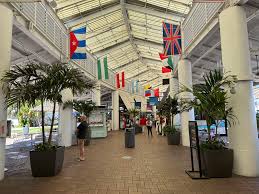We explain the differences between different marketplace work schemes and how to choose the right model for a specific business.
Models of working with marketplaces
FBO (Fulfillment by Operator)
FBS (Fulfillment by Seller)
DBS (Delivery by Seller)
Which work scheme to choose?
Expert advice
Models of working with marketplaces
Table of Contents
A marketplace model is a scheme of interaction between a seller and an online platform. The model determines how responsibility is distributed between the parties on the way of the goods from the seller to the buyer. Simply put, a marketplace system describes who is responsible for what. In particular, the models cover the following points:
1● where the goods are stored;
● who prepares the goods for shipment to customers;
3● how the goods are delivered;
4● who accepts returns.
On large marketplaces, such as Wildberries , Ozon and Yandex Market, there are three main schemes:
1. FBO (Fulfillment by Operator) — sale from the marketplace warehouse.
2. FBS (Fulfillment by Seller) — sale from the seller’s warehouse.
3. DBS (Delivery by Seller) — delivery by the seller.
Let’s look at each of these in detail.
Read Also:Maximize Learning with Education Connection
FBO (Fulfillment by Operator)
With the FBO model, the entire process of product sales is carried out by the marketplace. The seller ships the products to the platform’s warehouse, where they are stored until purchase. When the buyer places an order, the platform is responsible for assembling and sending the order to the buyer. Thus, the FBO system relieves the seller from the need to have their own warehouse and deal with the delivery of orders.
If the product does not suit the buyer, he can return it. The marketplace is also responsible for this: the consumer brings the product to the order pick-up point (OPP), it is sent back to the platform’s warehouse and stored there until the next order.
In the FBO model, the marketplace is also responsible for the relevance of the warehouse balance. While the product is in stock, its card is displayed in the listing. If it runs out, the seller sees this in their personal account and can put an additional batch in the platform’s warehouse. If the seller does not have time to ship the goods and all the products are sold out, the card disappears from the platform’s output, the buyer can only find it via a direct link, but cannot order it.
The peculiarity of the FBO model is that the seller cannot choose the region of sale of their goods. After sending them to the platform’s warehouse, they can be ordered in any city in Russia and neighboring countries, if the marketplace operates there. This means that the seller has no opportunity to influence the cost of logistics: the further the platform sends the goods, the higher the price the seller pays for delivery.
The course “Marketplace Manager” will help you understand the intricacies of models for working with different platforms . During the training, you can learn how to form a sales plan, test hypotheses and make decisions based on statistics. Students of the course receive free access to professional analytics and promotion tools .
FBS (Fulfillment by Seller)
Unlike FBO, in the FBS system the seller is responsible for storing and assembling the products, and the marketplace performs the delivery functions. This model is arranged as follows. The seller stores everything in his own warehouse, as soon as an order comes from the platform, the seller’s task is to pack the products and take them to the sorting center or acceptance point of the marketplace. And the platform is already responsible for delivery to the end customer. At the same time, as in FBO, when working under the FBS scheme, you cannot choose the sales region, the goods can be ordered at any point where the marketplace operates.
In case of return via FBS system, the goods go along the same chain, but in the opposite direction. The buyer brings it to the marketplace pick-up point, then it goes to the sorting center, from where the seller picks it up and returns it to his warehouse.
The peculiarity of this model of working with marketplaces is that the seller must collect and transfer the order to the platform within a certain period of time. Depending on the product category, it can be from an hour to a week. In addition, the seller is independently responsible for the remaining goods. Through the personal account, he informs the marketplace about the number of products available for sale. If in fact it turns out to be less and the buyer places an order, but the goods are not there, the seller will have to pay a fine.
Sometimes marketplaces provide customers with the opportunity to buy products with fast delivery. For example, Yandex Market and Ozon have a model called “Express”. With this system, the seller is obliged to collect the order within a few hours and call the marketplace courier.
DBS (Delivery by Seller)
In the DBS model, the seller uses the marketplace as a showcase for their product, stores it in their own warehouse and delivers it themselves. As soon as an order is received from the platform, the seller takes the product from their own warehouse, packs it and delivers it to the buyer themselves. They can choose any delivery method – for example, using logistics companies or their own couriers. However, it is impossible to send an order through the marketplace with this scheme of work.
The peculiarity of the DBS model is that, unlike FBO and FBS, it is possible to select the sales region, for example, Moscow and the Moscow region. This allows you to control the delivery time and cost. At the same time, the seller also has limited terms for sending the order to the buyer, on average up to 7 days depending on the type of product. He will also have to independently control the remaining goods.
Depending on the type of product, the DBS scheme may be the only possible option for working with the marketplace. Some platforms, such as Ozon, do not accept large, fragile products or products consisting of several parts, such as air conditioners, into their warehouse. In this case, you can only work according to the DBS model.
Read Also:Transform Your Future with Higher Education
Which work scheme to choose?
Only one scheme can be connected to each product card . However, the seller can choose different models for different product categories and change them if necessary. For example, a clothing seller can ship T-shirts to a marketplace warehouse using the FBO model, sell hoodies using FBS, and jackets using DBS.
The model for working with a marketplace should be selected based on the sales strategy of a specific seller, as well as the volume and category of goods. Let’s take as an example a seller who has an offline store in a specific region and who goes to marketplaces to increase the number of orders. Most likely, he already has his own warehouse and couriers or uses the services of a logistics company. The DBS model will suit him, in which he can use the platform as a showcase and choose his region for sales.
In the case of an online store that also has a warehouse and couriers, you can choose the DBS model and deliver goods to customers yourself. Or opt for the FBS scheme and transfer orders to the marketplace pick-up point. This system is convenient when connecting different platforms.
As a rule, if you have your own warehouse, the FBO model is not profitable for sellers. If the goods shipped to the marketplace are slow to sell, you will have to bear high storage costs, which can make sales ineffective. For example, Ozon charges an additional fee for storage if the products are in the warehouse for more than 160 days – 75 kopecks per day for each liter of volume. And if there have been no sales for more than two months, the fee will be twice as high. And in order to take the products back from the platform’s warehouse and sell them in your own store, you need to pay the marketplace.
The FBO model is suitable for sellers who do not have other sales channels, their own warehouses and couriers. They can ship the goods to the marketplace and transfer all stages of delivery to it. However, it is important to calculate the storage costs. For example, if the turnover of goods exceeds 2-3 months, it is more profitable to rent your own warehouse. In this case, you can stay on the FBO model and, having your own warehouse, ship small batches to the site. Or completely switch to the FBS scheme.











